| |
Cryptocoryne nevillii Hooker f. |
Cryptocoryne nevillii is well known name for a popular aquarium plant, but
already in 1928, Petch put severe doubt on the identity of the plants known by this name.
The problem was not cleared until 1976, when plants from the original locality, found by
Dan Nicolson, were discussed by Niels Jacobsen. Until now, many aquarists and also dealers
and nurseries still use this name for the plant which must give up its name and is now
called Cryptocoryne ×willissi. The 'real nevillii' is not suited for the aquarium. Besides Nicolson's collection, other localities are found by Kundu & Balakrishnan, Davidse & Sumithraarachci and Faden & Faden. From the latter, plants are also in cultivation.
Click on the picture to get the full image (ca. 50 kB) |
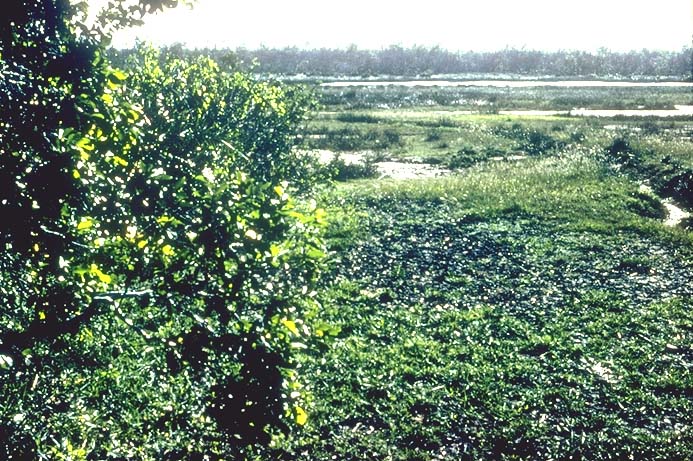 |
The locality of C. nevillii near Batticaloa in Sri
Lanka. For several months this biotope is fully dried out. C. nevillii goes dormant loosing all its leaves.
photo Nicolson |
|
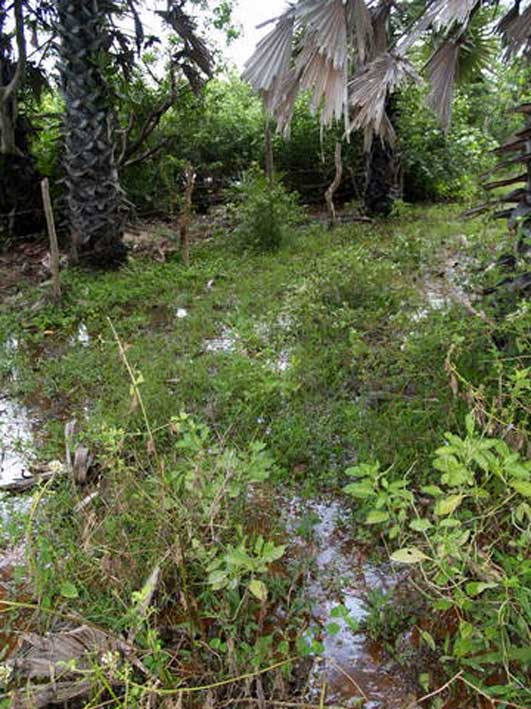 |
Pools with standing water in the wet season.
photo Babics
|
|
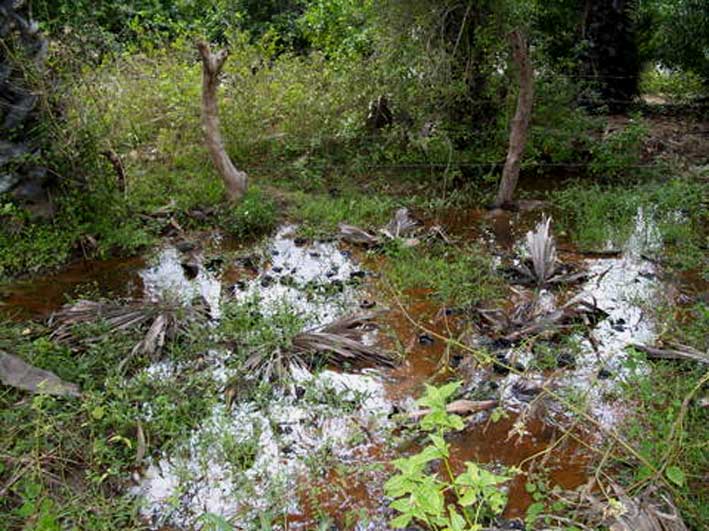 |
C. nevillii grows in small groups scattered over the pool.
photo Babics |
|
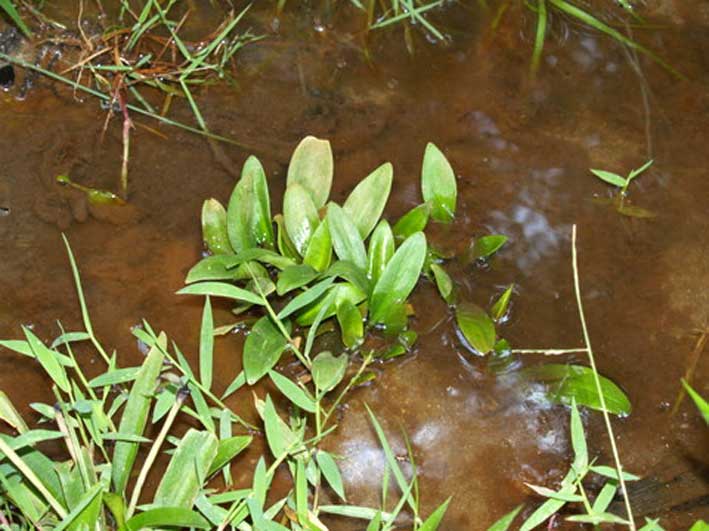 |
A small group with young plants.
photo Babics
|
|
| |
|
|
|
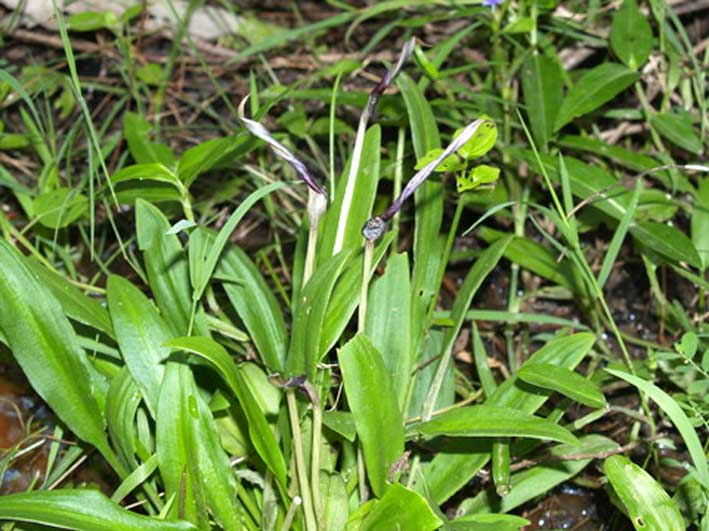 |
Close up with flowering C. nevillii.
Faden coll.
photo Babics
|
|
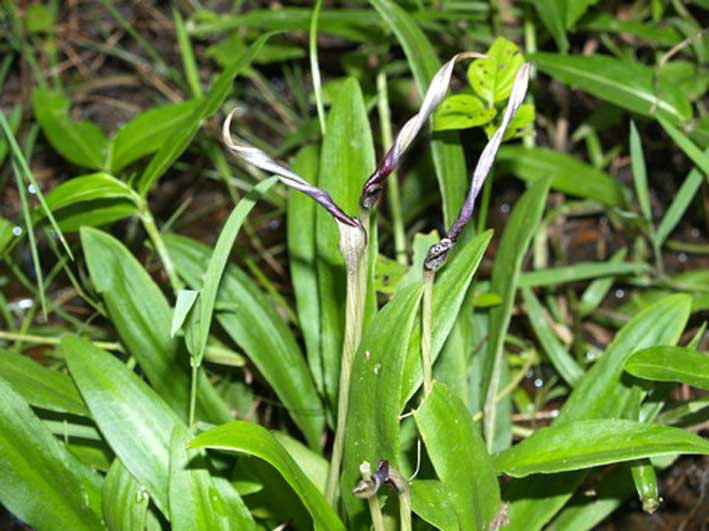 |
Note the recurved limb of the spathe..
Faden coll.
photo Babics
|
|
 |
.. and the elliptical leaves..
Faden coll.
photo Babics
|
|
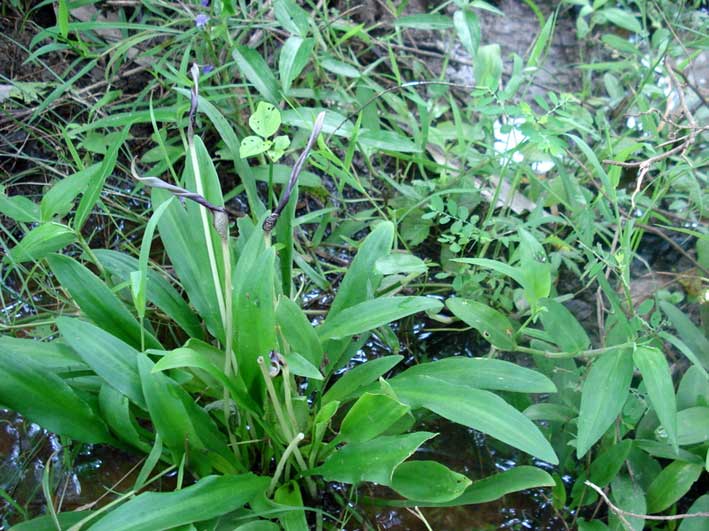 |
and again the very long limb.
Faden coll.
photo Babics
|
|
| |
|
|
|
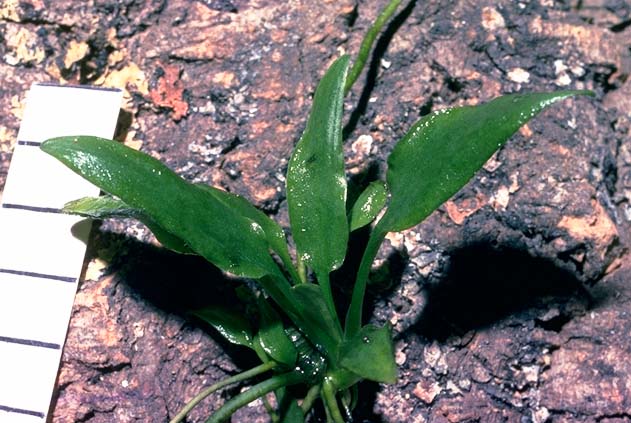 |
An fresh imported rhizome thrives several leaves in a couple
of weeks. The ruler (full size pic) displays cm.
Nicolson coll. cult. B 633
|
|
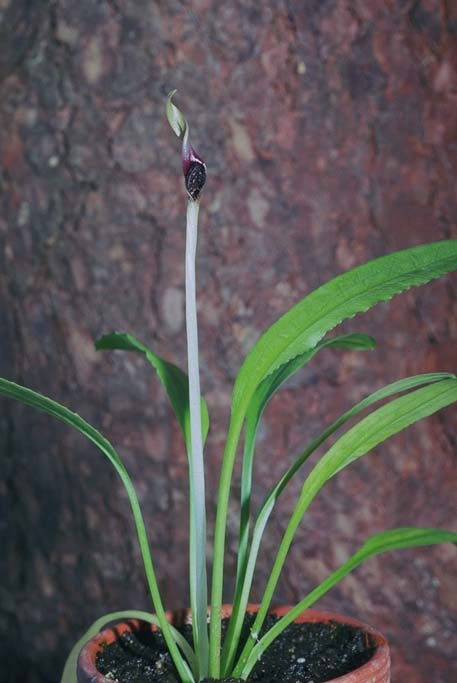 |
A well developed C. nevillii in emerged culture in mineral soil. The
first year the plant is rather stout, but after a couple of years the plant grows smaller
and smaller but still flowers easily after a dry period.
Nicolson coll. cult. B 633
|
|
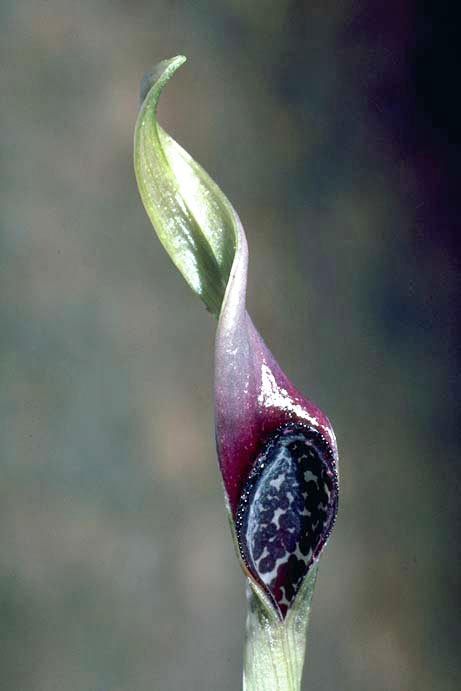 |
The limb of the inflorescence is very distinct. A high collar
and a throat with dark violet spots. The spathe is rather elongated, and may reach more than 20 cm
in well developed plants.
Nicolson coll. cult. B 633
|
|
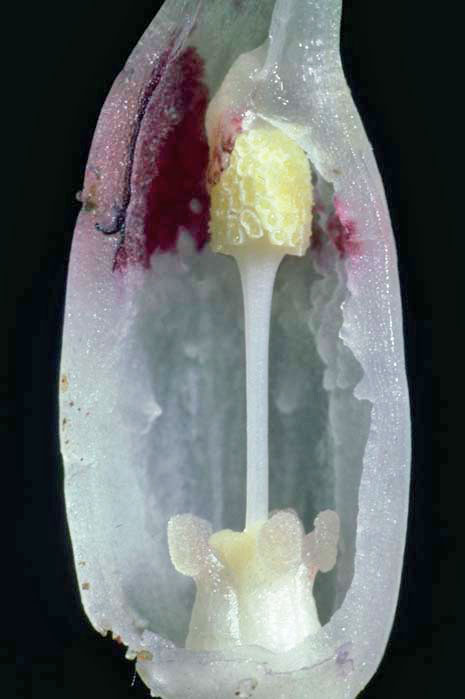 |
The upper part of the kettle wall can have a red colour. Note
the bulges in the kettle wall.
Nicolson coll. cult. B 633
|
|
| |
|
|
|
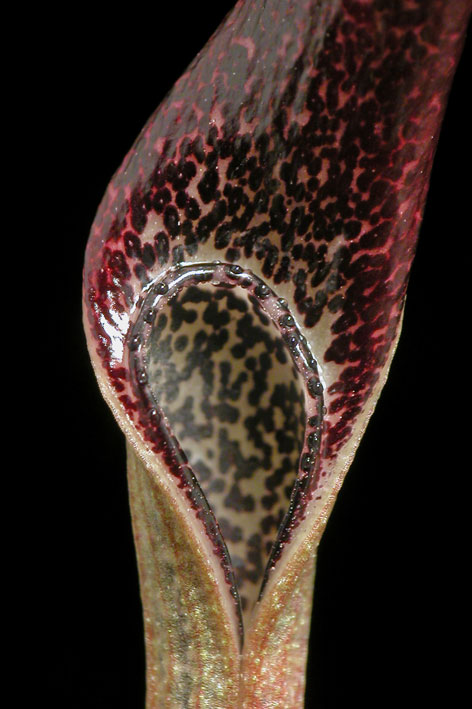 |
A less pronounced collar and a dotted limb of the spathe
Faden coll., Babics PB08-01, cult. B 1206
|
|
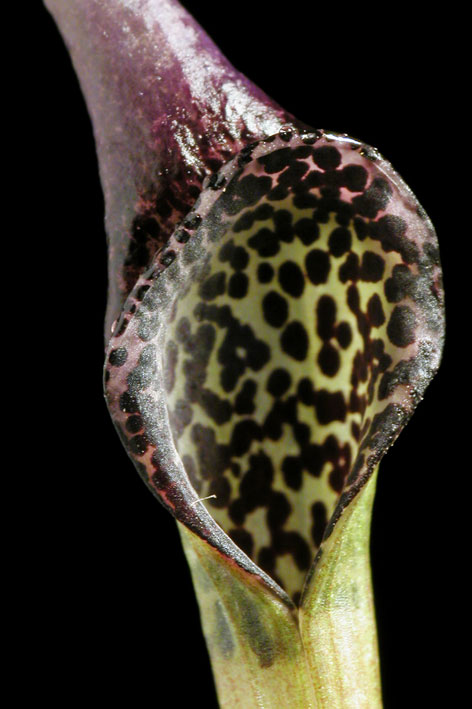 |
The recurved limb without dots and with a very pronounced collar.
Faden coll., Babics PB08-01, cult. B 1206
|
|
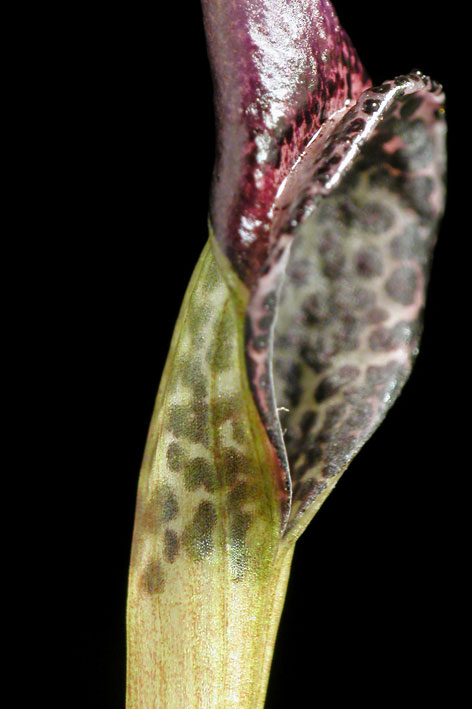 |
This pronounced collar is extreme in Cryptocoryne.
Faden coll., Babics PB08-01, cult. B 1206
|
|
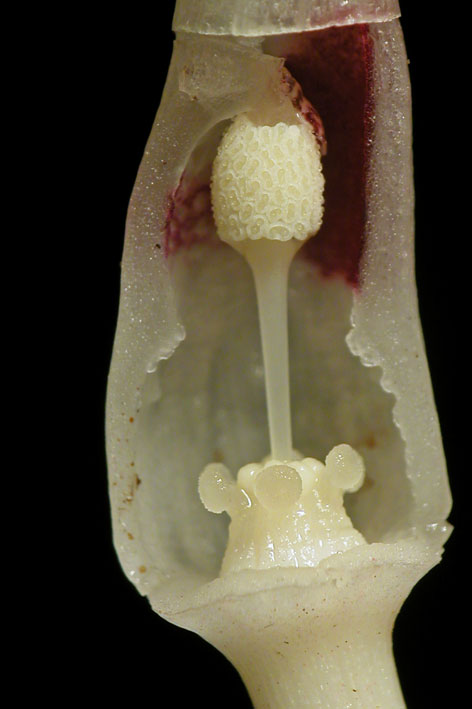 |
A rather constricted kettle.
Faden coll., Babics PB08-01, cult. B 1206
|
|
| |
|
|
|
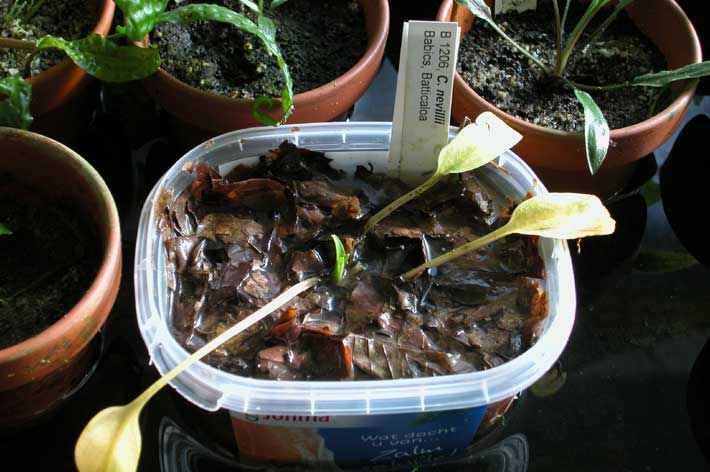 |
In cultivation, after some months, C. nevillii withdraws, going dormant.
Faden coll., Babics PB08-01, cult. B 1206
|
|
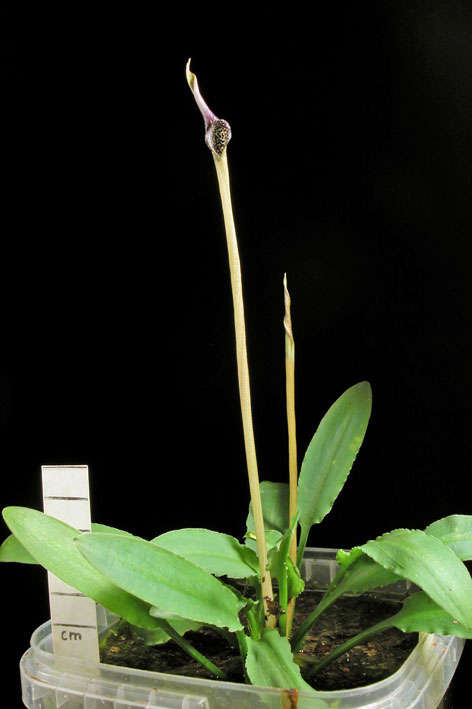 |
Repotted in beech tree litter, the plant starts again. One can repeat this several times, breaking dormancy.
Faden coll., Babics PB08-01, cult. B 1206
|
|
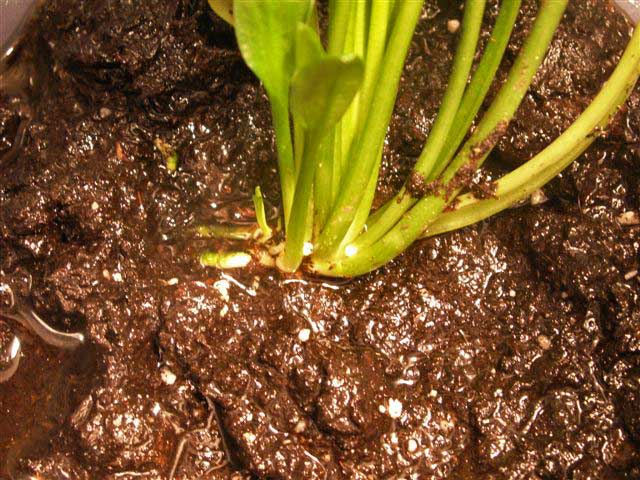 |
Kettner discovered that new sprouts are formed on the rhizome.
Faden coll., Babics PB08-01, cult. Kettner
photo Kettner
|
|
 |
Young plants appearing on the rhizome.
Faden coll., Babics PB08-01, cult. Kettner
photo Kettner
|
|
| |
|
|
|
 |
The drawing in Jacobsen's article from 1975.
This article caused much debate in Europe, not at least in respect of finding a new name
for the 'good old nevillii'.(Jacobsen 1976, 1977, 1882)
drawing B. Johnsen
|
|
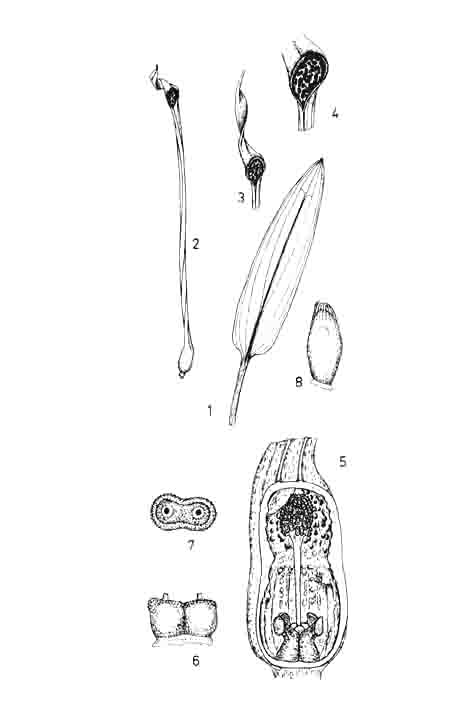 |
Drawing after Jacobsen's material in De Wit (1990)
drawing Ike Zewald
|
|
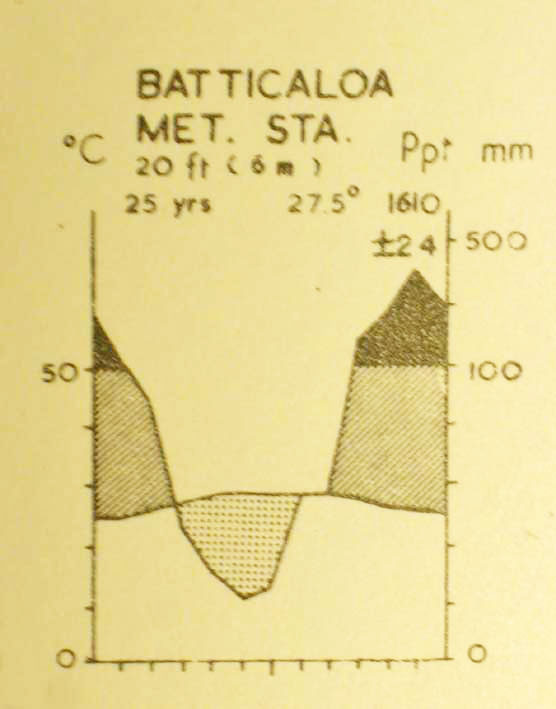 |
Climate diagram for Batticaloa. Note the dry season from April to August
|
|
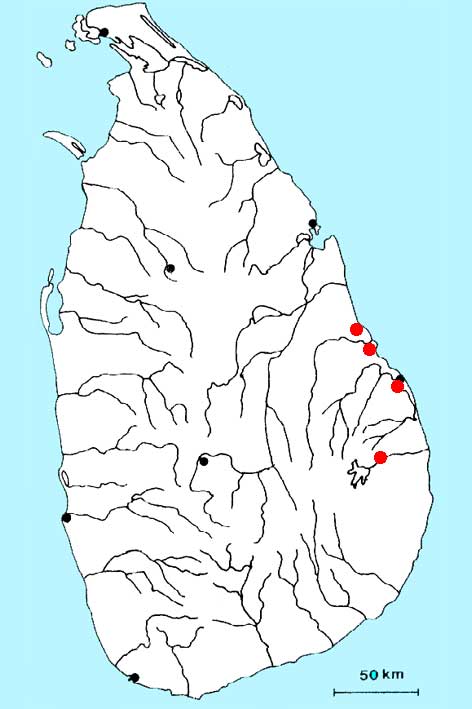 |
Distribution of C. nevillii in the eastern part of
Sri Lanka.
|
|
| |
|
|
|
Cultivation of Cryptocoryne nevillii on the long term is not easy. I tried to
simulate a dry season by putting the pot out of the water and placing it is a quite humid
atmosphere. After some years the plants grow smaller and smaller and finally didn't came back
again. Cultivated in beech tree litter it may be easier, the plant easy accepts 'repotting' after the growing period and starts growing again.
Though the locality near Batticaloa is well defined, several collectors couldn't find the
plant, even in the wet season. The area may be still unsafe because of minefields?
It is very nice to read the article of Petch from 1928 on this plant. He put his doubt on the - already in his
days - misidentification.
Updated January 2010
|
Literature.
- Engler, A., 1920. Cryptocoryne in: Das Pflanzenreich IV.23.F. Araceae - Aroideae :
232-249, Leipzig.
- Graaf, A.de & Arends, J.C., 1986. The occurrence of Cryptocoryne and Lagenandra
(Araceae) on Sri Lanka. Nord.J.Bot. 6 : 757-764.
- Hooker, J.D., 1898,Cryptocoryne Fischer, in Trimen,A handbook to the Flora of Ceylon,
London, IV : 345-350.
- Jacobsen, N., 1976. Notes on Cryptocoryne of Sri Lanka (Ceylon). Bot.Notiser 129 :
179-190.
- Jacobsen, N., 1977. Zytologie und Taxonomie der Cryptocorynen Sri Lankas. Aqua-Planta 4-77
: 3-8 (cover).
- Jacobsen, N., 1977. Chromosome numbers and taxonomy in Cryptocoryne (Araceae). Bot.Notiser
130 : 71-87.
- Jacobsen, N., 1981. Cryptocoryne undulata Wendt und Bemerkungen zu andere Arten.
Aqua-Planta 2-81 : 31-38 (cover).
- Jacobsen, N., 1982. Cryptocorynen. Alfred Kernen Verlag, Stuttgart. Jacobsen, N., 1987.
Cryptocoryne in: A Revised Handbook to the Flora of Ceylon, Vol. VI: 85-99.
- Kasselmann, C., 1995. Aquarienpflanzen. Ulmer, Stuttgart (472p).
- Möhlmann, F., 1993. Die Cryptocoryne-Arten Ceylons (1). Aqua-Planta 4-93 : 123-128.
- Petch, B.A., 1928. Notes on Cryptocoryne. Annals R.Bot.Gard., Peradeniya : Vol.11 part 1 :
11-26, pl 2-5. (Document
service)
- Wit, H.C.D.de, 1990. Aquarienpflanzen, 2. Auflage. Ulmer, Stuttgart.
|
|
|
|
 |
|
|